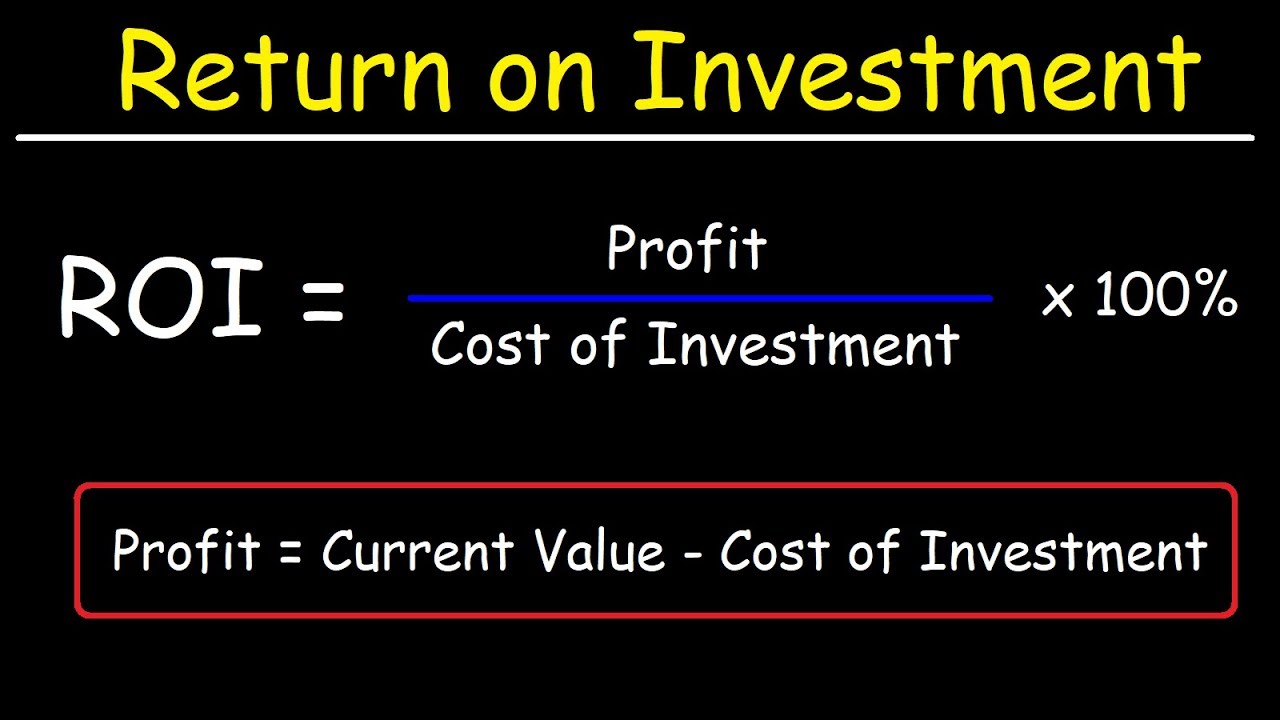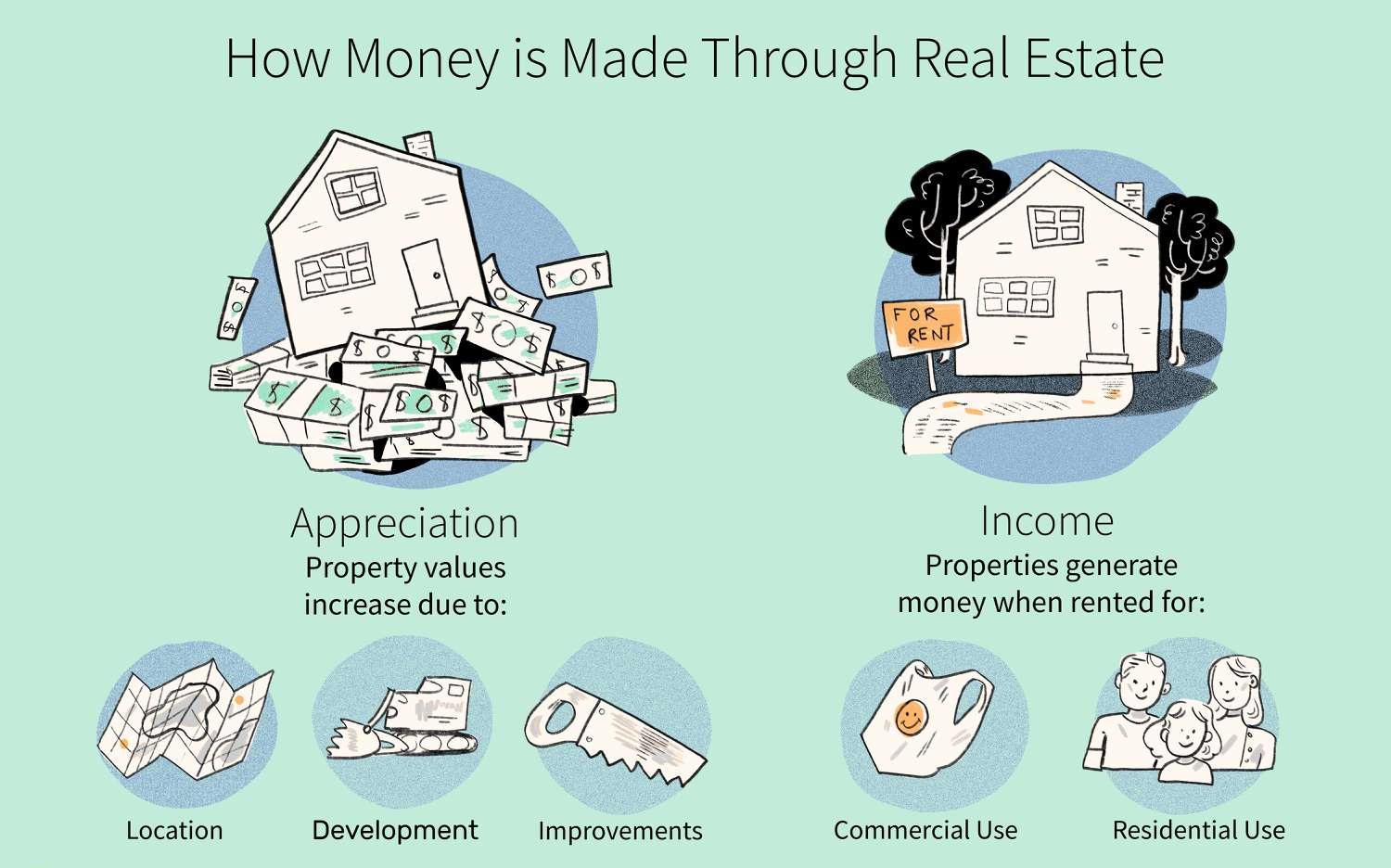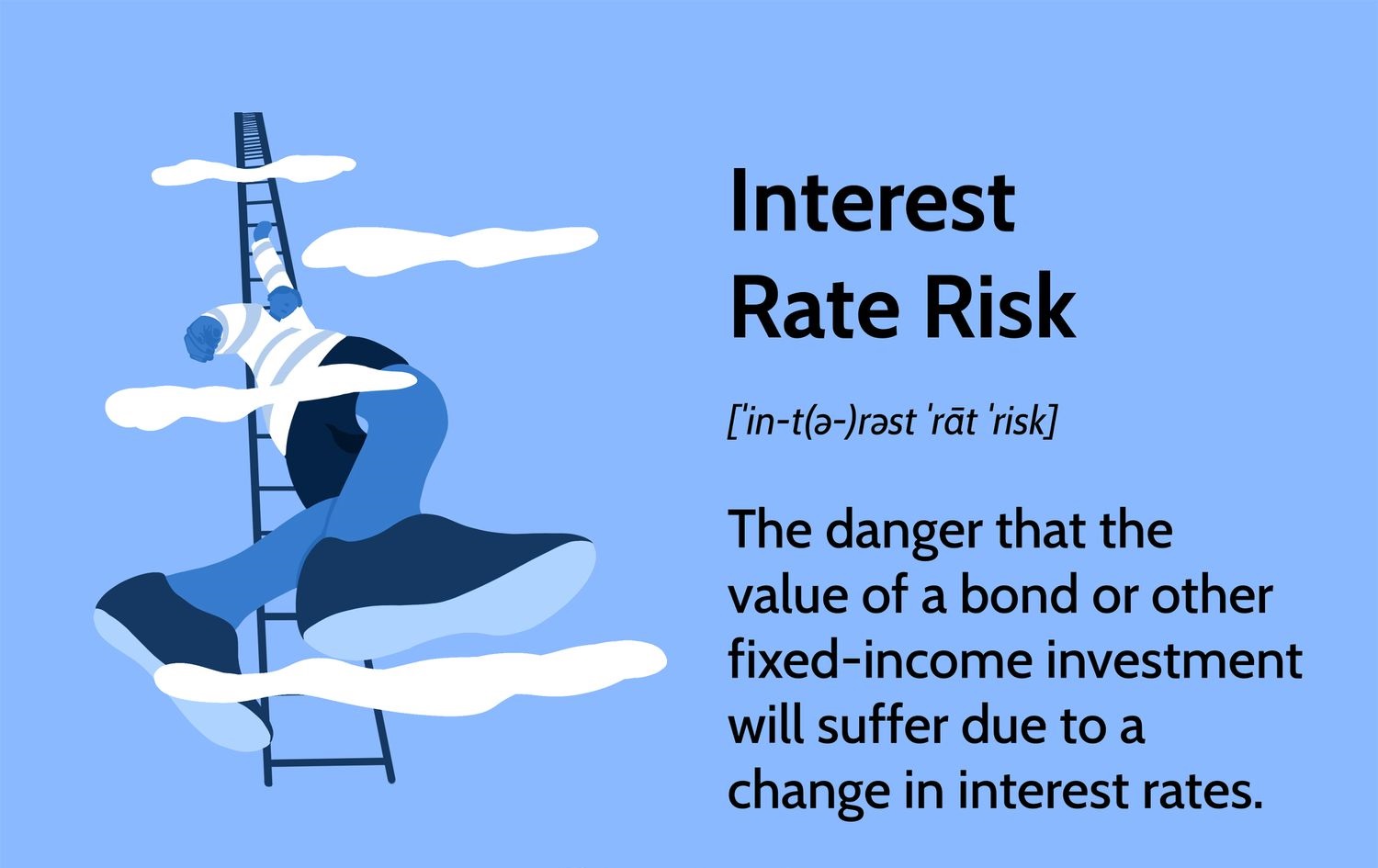Introduction
Welcome to the world of real estate investments! Investing in real estate can be a lucrative and rewarding endeavor, providing you with the opportunity to generate passive income, build long-term wealth, and diversify your investment portfolio. However, before you dive headfirst into the world of real estate, it’s important to have a solid understanding of how to analyze potential investment opportunities.
Real estate investments involve the purchase, ownership, management, rental, or sale of properties, whether residential, commercial, or industrial. The key to successful real estate investing lies in conducting thorough analysis and research to evaluate the potential risks and rewards of a particular investment.
Throughout this article, we will explore various aspects of analyzing real estate investments, including the different types of properties you can invest in, the factors to consider when analyzing investments, and the tools and metrics used to assess the financial viability of an investment. We will also discuss the importance of conducting market research and due diligence to mitigate risks and make informed investment decisions.
Whether you’re a seasoned investor looking to expand your portfolio or a novice just entering the real estate market, this article will provide valuable insights and guidance to help you navigate the intricacies of real estate investing. By understanding how to analyze and evaluate potential investment opportunities, you can make informed decisions that align with your financial goals and maximize your chances of success.
So, let’s dive into the world of real estate investments and explore the key factors to consider when analyzing potential investment opportunities. By the end of this article, you’ll be equipped with the knowledge and tools necessary to make informed investment decisions and embark on your real estate investment journey.
Understanding Real Estate Investments
Before delving into the analysis of real estate investments, it’s crucial to have a solid understanding of what exactly real estate investments entail. At its core, real estate investment involves the acquisition and ownership of properties with the intent of generating income or building wealth through appreciation.
Real estate investments can take various forms, such as residential properties, commercial buildings, industrial spaces, or even undeveloped land. The type of investment you choose will depend on your goals, risk tolerance, and available capital. It’s important to carefully consider the different investment options and identify the one that aligns best with your investment strategy.
One of the primary benefits of real estate investments is the potential for generating steady cash flow. Rental properties, for example, can provide a consistent stream of income through monthly rent payments from tenants. Additionally, as properties appreciate in value over time, investors can also benefit from capital appreciation.
Real estate investments are often considered a tangible asset, as opposed to stock or bond investments. This tangible aspect can provide a sense of security and control, as investors have physical ownership of the property. Furthermore, real estate investments offer potential tax advantages, such as deductions for mortgage interest and depreciation expenses.
It’s worth noting that real estate investments come with their own set of challenges and risks. Property management, maintenance costs, and market fluctuations are some factors that investors need to consider. Additionally, real estate investments typically require a significant initial capital investment and long-term financial commitment.
Understanding the fundamentals of real estate investments lays the foundation for analyzing potential investment opportunities effectively. By comprehending the different types of investments available and the benefits and risks associated with each, you can make informed decisions and tailor your investment strategy accordingly.
In the following sections, we will delve deeper into the analysis of real estate investments, providing insight into the factors to consider, financial analysis tools, market research techniques, and due diligence processes. By exploring these aspects, you will gain the knowledge and tools necessary to evaluate real estate investments and make informed investment decisions.
Types of Real Estate Investments
Real estate investments offer a wide range of options for investors, allowing them to select the type of property that aligns with their investment goals and risk tolerance. Understanding the different types of real estate investments is essential when analyzing potential opportunities. Let’s explore some of the common types:
- Residential Properties: Residential properties refer to single-family homes, apartments, condominiums, townhouses, or any other property intended for residential use. Investing in residential properties can provide a steady income stream through rental payments from tenants.
- Commercial Properties: Commercial properties are used primarily for business purposes, such as office buildings, retail spaces, warehouses, or hotels. This type of investment often appeals to investors seeking higher potential returns and longer lease terms.
- Industrial Properties: Industrial properties include factories, warehouses, distribution centers, or manufacturing facilities. Investing in industrial properties can be lucrative, as they tend to generate high rental income due to the specialized nature of the spaces.
- Retail Properties: Retail properties encompass shopping centers, malls, storefronts, or freestanding retail buildings. Retail investments can be attractive for investors looking for stable income and the potential for capital appreciation in prime retail locations.
- Mixed-Use Properties: Mixed-use properties combine residential, commercial, and/or retail spaces within a single property. This type of investment offers diversification and the potential for multiple income streams, making it appealing to investors seeking a balanced portfolio.
- Real Estate Investment Trusts (REITs): REITs are companies that own, operate, or finance income-generating properties. Investors can purchase shares of publicly traded REITs, offering an opportunity to invest in real estate without the need for direct property ownership.
- Raw Land: Raw land refers to undeveloped or vacant land that has no existing structures. Investing in raw land involves speculation on future development or appreciation, making it a higher-risk, potentially high-reward investment.
Each type of real estate investment carries its own set of advantages, risks, and considerations. It’s crucial to evaluate your investment goals, risk tolerance, and market conditions before choosing the type of investment that best aligns with your objectives.
Now that we have explored the various types of real estate investments, the next section will focus on the essential factors to consider when analyzing potential real estate investment opportunities. By understanding these factors, you can make informed decisions and increase your chances of a successful investment.
Factors to Consider when Analyzing Real Estate Investments
When analyzing real estate investments, it’s crucial to consider a variety of factors to ensure you make informed and profitable decisions. Here are some key factors to keep in mind:
- Location: The location of a property is of utmost importance. A desirable location can attract tenants, drive rental demand, and potentially lead to higher property appreciation. Consider factors such as proximity to amenities, schools, transportation, and economic growth prospects.
- Market Trends: Analyzing market trends and conditions is crucial in determining the potential profitability of an investment. Factors like supply and demand, rental rates, vacancy rates, and market growth should be carefully evaluated.
- Property Condition: Assessing the condition of a property is vital in determining potential maintenance and renovation costs. A thorough inspection of the property can help identify any underlying issues that may affect its value or require additional investment.
- Financial Analysis: Conducting a comprehensive financial analysis is essential in evaluating the profitability of an investment. Consider factors such as purchase price, potential rental income, operating expenses, financing costs, and projected cash flow. This analysis will help determine the return on investment and potential risks associated with the investment.
- Financing Options: Assessing available financing options is crucial, as it can impact the overall profitability of the investment. Evaluate interest rates, loan terms, down-payment requirements, and other financing factors to determine the feasibility of the investment.
- Risk Assessment: Real estate investments come with inherent risks, such as market fluctuations, tenant turnover, and unforeseen expenses. Carefully assess the risks associated with the investment and consider risk mitigation strategies, such as diversifying your portfolio or obtaining appropriate insurance coverage.
- Exit Strategy: Before making an investment, it’s important to have a clear exit strategy in mind. Consider whether you plan to hold the property long-term, sell it for a profit, or explore other options. Having a well-defined exit strategy will help guide your investment decisions.
These factors are just some of the key considerations when analyzing real estate investments. It’s important to conduct thorough research, seek professional advice, and stay up-to-date with market trends to make informed decisions. Remember, each investment opportunity is unique, and careful evaluation is necessary to mitigate risks and maximize returns.
In the next section, we will explore the financial analysis tools commonly used to evaluate real estate investments. These tools will help you analyze the financial viability of a property and make data-driven investment decisions.
Financial Analysis Tools for Real Estate Investments
When analyzing real estate investments, it’s important to utilize financial analysis tools that can provide insights into the potential profitability and return on investment. These tools help evaluate the financial viability of a property, assess cash flow, and analyze various investment scenarios. Here are some commonly used financial analysis tools:
- Cap Rate (Capitalization Rate): The cap rate is a widely used metric in real estate investing. It measures the return on investment by comparing the net operating income (NOI) of a property to its purchase price. A higher cap rate indicates a higher potential return on investment.
- Cash Flow Analysis: Cash flow analysis assesses the amount of money generated from an investment property after deducting all expenses. By analyzing cash flow, investors can determine if the property will generate positive or negative cash flow and evaluate the potential for profitability.
- ROI (Return on Investment): ROI measures the profitability of an investment by comparing the investment gain or loss to the initial investment cost. It is expressed as a percentage and helps investors assess the potential returns of a real estate investment.
- GRM (Gross Rent Multiplier): The GRM is a simple tool used to assess the value of a rental property. It compares the property’s purchase price to its annual gross rental income. A lower GRM indicates a potentially better investment opportunity.
- Debt Service Coverage Ratio (DSCR): The DSCR is used to assess the property’s ability to generate enough income to cover its debt payments. It is calculated by dividing the property’s net operating income by its annual debt service. A higher DSCR indicates a more secure investment.
- Pro Forma Analysis: Pro forma analysis involves creating future projections and cash flow forecasts for a property. This analysis considers potential income, expenses, and market trends to estimate the property’s financial performance under different scenarios. It helps investors assess the investment’s potential risks and returns.
- Sensitivity Analysis: Sensitivity analysis involves evaluating how changes in various factors, such as rental income or interest rates, affect the investment’s financial performance. This analysis helps investors understand the potential impact of different market conditions and make more informed decisions.
Utilizing these financial analysis tools can provide valuable insights and assist in making data-driven investment decisions. It’s important to remember that these tools should be used in conjunction with other factors, such as location, property condition, and market trends, to gain a comprehensive understanding of the investment opportunity.
In the next section, we will discuss the key metrics used to evaluate real estate investments. These metrics will provide a deeper understanding of the investment’s financial performance and assist in comparing different investment opportunities.
Key Metrics to Evaluate Real Estate Investments
When evaluating real estate investments, there are several key metrics that can help investors assess the financial performance and determine the potential profitability of a property. These metrics provide valuable insights into the investment’s cash flow, return on investment, and overall viability. Let’s explore some of the key metrics:
- Net Operating Income (NOI): NOI is the total revenue generated by a property after deducting all operating expenses, excluding debt service and income tax. It helps investors understand the property’s potential income and evaluate its financial performance.
- Cash-on-Cash Return (CoC): CoC measures the annual cash flow generated from an investment property relative to the total cash invested. It is calculated by dividing the annual cash flow by the initial investment. This metric provides a snapshot of the return on the actual cash invested in the property.
- Internal Rate of Return (IRR): IRR is a metric used to estimate the profitability of an investment by calculating the average annual return over the projected holding period. It takes into account the timing and amount of cash flows generated by the investment and helps investors compare different investment opportunities.
- Return on Investment (ROI): ROI calculates the percentage return on the investment relative to the initial cost. It takes into account both the cash flow generated and any appreciation in the property’s value. ROI helps investors assess the overall profitability and potential returns of the investment.
- Operating Expense Ratio (OER): OER is a measure of the property’s operating expenses as a percentage of the effective gross income (EGI). It helps investors understand the proportion of income being spent on operating costs and assess the property’s overall efficiency and profitability.
- Vacancy Rate: The vacancy rate measures the percentage of unoccupied units in a rental property over a given period. It helps investors understand the potential income losses and assess the property’s rental demand and competitiveness in the market.
- Debt Yield Ratio: The debt yield ratio compares a property’s net operating income to the outstanding debt on the property. It is calculated by dividing the NOI by the property’s loan amount. This metric provides insight into the property’s ability to generate sufficient income to cover its debt obligations.
These key metrics provide valuable information about the financial performance and potential returns of real estate investments. It’s important for investors to evaluate and analyze these metrics in conjunction with each other to gain a comprehensive understanding of the investment opportunity and make informed decisions.
In the next section, we will discuss the importance of conducting market research when analyzing real estate investments. Market research plays a crucial role in understanding the dynamics of the real estate market and identifying potential investment opportunities.
Conducting Market Research for Real Estate Investments
Market research is a crucial step in analyzing real estate investments as it provides valuable insights into the current and future dynamics of the real estate market. Conducting thorough market research helps investors make informed decisions, identify potential investment opportunities, and assess the risks and rewards of a particular market. Here are some important aspects to consider when conducting market research for real estate investments:
- Local Market Conditions: Understanding the local market conditions is essential. Analyze factors such as supply and demand, population growth, job market, and economic development prospects. This information will help you identify markets with strong growth potential and favorable investment opportunities.
- Property Values and Trends: Research property values and trends to gain an understanding of the overall real estate market in the area. Look at historical data, recent sales, and pricing trends to identify market cycles and potential opportunities for buying or selling.
- Rental Market Analysis: If investing in rental properties, analyze the rental market. Research average rental rates, vacancy rates, and rental demand in the area. This information will help assess the potential income and cash flow generated by the investment property.
- Competition Analysis: Evaluate the competitive landscape in the target market. Research similar properties in the area and assess their rental rates, occupancy rates, amenities, and overall market positioning. Understanding your competition will help you identify ways to differentiate your investment and attract tenants or buyers.
- Infrastructure and Development Plans: Research infrastructure projects and development plans in the area. This includes transportation improvements, new commercial or residential developments, and government initiatives. Such developments can positively impact property values and market growth, making it an attractive investment opportunity.
- Local Regulations and Zoning: Familiarize yourself with local regulations and zoning requirements. Research building codes, zoning restrictions, and any upcoming changes that may affect the potential use or development of the property. Compliance with local regulations is vital to avoid legal issues and maximize the property’s potential.
- Real Estate Professionals: Seek advice from local real estate professionals, such as real estate agents, brokers, or property management companies. They have firsthand knowledge of the local market and can provide valuable insights and guidance in assessing investment opportunities.
Conducting comprehensive market research provides a solid foundation for analyzing real estate investments. It helps investors identify emerging markets, evaluate market trends, and make informed investment decisions based on data and market insights.
In the next section, we will discuss the due diligence process for real estate investments. Performing due diligence is crucial to validate investment assumptions, assess risks, and ensure a thorough understanding of the investment opportunity.
Due Diligence for Real Estate Investments
Performing due diligence is a critical step in the process of analyzing real estate investments. It involves conducting thorough research, inspections, and assessments to validate investment assumptions, assess risks, and ensure a comprehensive understanding of the investment opportunity. Here are some key aspects to consider during the due diligence process:
- Property Inspection: Arrange for a professional property inspection to assess the physical condition of the property. A thorough inspection can help identify potential issues such as structural problems, plumbing or electrical issues, or maintenance requirements. This information will enable you to estimate repair and renovation costs accurately.
- Legal and Title Review: Engage a real estate attorney to review all legal and title documents related to the property. This includes reviewing purchase agreements, leases, zoning and permit documentation, survey reports, and title insurance. A thorough legal review ensures that the property has clear title and is free from any legal or encumbrance issues.
- Financial Documentation: Review financial documentation related to the property, including income and expense statements, rent rolls, lease agreements, and tax records. This analysis helps validate the property’s income and expenses, estimate the potential cash flow, and identify any financial red flags.
- Environmental Assessment: Consider conducting an environmental assessment or phase I environmental site assessment (ESA) to identify any potential environmental risks associated with the property. This assessment helps identify issues such as soil contamination, hazardous materials, or proximity to environmentally sensitive areas.
- Market Analysis: Validate your market research by analyzing comparable sales and rental data in the area. This analysis helps confirm the property’s value and potential rental income, and assess market dynamics and trends.
- Contract and Financing Review: Review all contractual agreements and financing terms associated with the property. Evaluate the terms of loans or mortgages, leases, and any other contracts. Assess the financial feasibility and potential risks associated with these agreements.
- Tenant and Property Management Assessment: If the property has existing tenants, assess the tenant leases, occupancy rates, and any potential tenant issues. Evaluate the property management company’s performance, if applicable, and their ability to effectively manage the property.
Conducting thorough due diligence is critical for mitigating risks and making informed investment decisions. It helps identify any potential issues, verify investment assumptions, and ensure that the investment aligns with your financial goals and objectives.
Once the due diligence process is complete and you are satisfied with the results, you can proceed with confidence in your investment decision. However, it’s important to note that due diligence is an ongoing process, and regular monitoring of the investment is recommended to ensure its continued success.
In the next section, we will discuss the risks and rewards associated with real estate investments. Understanding these factors is essential for making informed decisions and managing expectations.
Risks and Rewards of Real Estate Investments
Real estate investments offer both potential rewards and inherent risks that investors need to consider before committing their capital. Understanding these risks and rewards is vital for making informed investment decisions and managing expectations. Let’s explore some of the key risks and rewards associated with real estate investments:
Rewards:
- Income Generation: One of the primary rewards of real estate investments is the potential for generating a steady stream of income. Rental properties, in particular, can provide ongoing rental income, allowing investors to build a passive income stream.
- Appreciation: Over time, real estate properties have the potential to appreciate in value, providing investors with capital appreciation. This appreciation can occur due to market trends, improvements in the property or the surrounding area, or changes in demand and supply dynamics.
- Tax Advantages: Real estate investments offer certain tax advantages that can help reduce the tax burden on investment income. Deductions for mortgage interest, property taxes, depreciation expenses, and other eligible expenses can lower the taxable income, resulting in potential tax savings.
- Diversification: Adding real estate investments to a diversified investment portfolio can help spread risk and enhance overall portfolio performance. Real estate investments often have low correlations with other asset classes, providing potential diversification benefits.
- Tangible Asset: Real estate investments offer the advantage of physical ownership of the asset. This tangible nature can provide a sense of security and control, as investors have the ability to make improvements and have a say in the operation and management of the property.
Risks:
- Market Volatility: Real estate markets can be subject to fluctuations, which may impact the value and demand for properties. Economic conditions, changes in interest rates, and local market factors can influence property values and rental demand.
- Maintenance and Operating Costs: Real estate investments require ongoing maintenance, repairs, and operational expenses. These costs can impact the profitability and cash flow of the investment. Failure to properly budget for these expenses can erode returns.
- Vacancy and Tenant Risks: Rental properties are subject to the risks of tenant turnover and vacancy. Extended periods of vacancies can impact rental income and cash flow. Additionally, there is a risk of dealing with problematic tenants, potential rent defaults, or legal disputes.
- Liquidity Constraints: Real estate investments are typically less liquid than other investment types. It may take time to sell a property and convert it into cash. In case of urgent need for liquidity, selling the property quickly may result in less favorable terms or discounted pricing.
- Regulatory and Legal Risks: Real estate investments are subject to various regulations and legal requirements. Non-compliance with zoning regulations, building codes, or lease terms can lead to penalties, litigation, or restrictions on property use.
Understanding the risks and rewards associated with real estate investments is crucial for making informed decisions and effectively managing your investments. By carefully assessing the risks and considering potential rewards, investors can mitigate risks, maximize returns, and navigate the dynamic real estate market with confidence.
In the concluding section, we will summarize the key points discussed and emphasize the importance of thorough analysis and research when evaluating real estate investments.
Conclusion
Investing in real estate can be a rewarding and lucrative venture, but it requires careful analysis, research, and due diligence. Throughout this article, we have explored various aspects of analyzing real estate investments, from understanding the different types of investments to evaluating key factors, financial metrics, and market dynamics.
By thoroughly analyzing real estate investments, investors can make informed decisions, mitigate risks, and maximize their chances of success. Factors such as location, market trends, property condition, and financial analysis play a crucial role in evaluating investment opportunities. Utilizing financial analysis tools and key metrics helps assess the financial viability and potential returns of a property.
Conducting market research and due diligence are vital steps in the investment process. Researching local market conditions, assessing competition, and understanding legal and regulatory requirements ensure a comprehensive understanding of the investment opportunity. Additionally, evaluating risks and rewards helps manage expectations and make informed decisions.
It is important to note that real estate investments come with their own set of risks, such as market volatility, maintenance costs, tenant risks, and liquidity constraints. However, when approached with thorough analysis and research, these risks can be mitigated, and the potential rewards can be realized.
As with any investment, it is crucial to continually monitor and manage real estate investments. Stay updated with market trends, regularly assess the property’s performance, and consider adjusting your investment strategy when necessary.
In conclusion, real estate investments have the potential to generate income, provide capital appreciation, offer tax advantages, and diversify investment portfolios. However, successful real estate investing requires a deep understanding of the market, diligent analysis, and informed decision-making. By leveraging the knowledge and tools outlined in this article, you can embark on your real estate investment journey with confidence and increase your chances of achieving your financial goals.

























